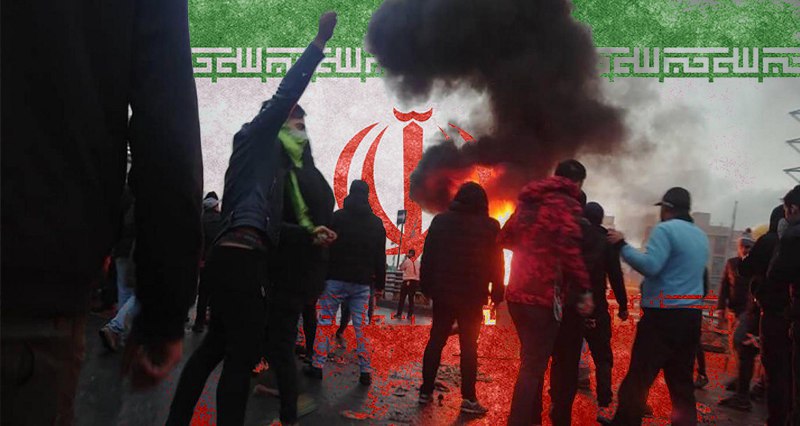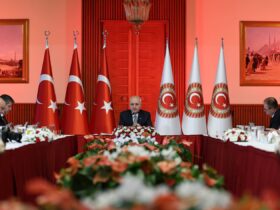New riots
On July 16 in the Iranian city of Behbahan (province of Khuzestan) anti-government rallies took place.
Iranian security forces used tear gas to disperse demonstrators.
The demonstrators, commentators believe, expressed support for those condemned to death for participating in large-scale protests in the Islamic Republic last Autumn. Some protesters also chanted anti-government slogans.
The November 2019 riots began with protests over socio-economic difficulties in Iran, with the government of President Hassan Rouhani’s decision to raise gasoline prices being the trigger. A few days later, they were suppressed.
Protesters Amirhossein Moradi, Mohammad Rajabi and Saeed Tamjidi were sentenced to death. They were charged with vandalism, arson and disruption of state power. Western and Arab media are fanning new Iranian protests, reporting internet blackouts in the country and claiming that protesters have risen up against the “mullahs’ regime”.
However, there are reports from the scene that the protests were actually far smaller than the media of the Persian Gulf countries and the US and Europe represent.
Iranian media report that the anti-government groups tried to organize similar protests in the other parts of the country, but “key elements of opposition groups… who were encouraging people to protest on Friday in the northeastern Khorasan Razavi province” were arrested.
The significance of Khuzestan
The Khuzestan province is home to a compact Arab population of IRI. This region is also the source of most of Iran’s oil.
Last year, just before the “gasoline protests” in the Iranian province of Khuzestan, a new oil field with a volume of more than 53 billion barrels of oil was discovered in south-western Iran. It is the second largest oil field in the country after the oil deposits in the city of Ahwaz.
In August 2020, the largest Gas Refinery in the Middle East will open in this province. It can produce 10.4 million tons of methane, 1.5 million tons of ethane, 1 million tons of propane, 600,000 tons of gas condensates and 500,000 tons of butane annually.
Traditionally, Iran’s opponents in the Gulf region have tried to use the ethnic factor to fuel anti-Iranian and separatist sentiments in this strategically important region of the country. In May Iranian authorities arrested 14 members of “takfiri and separatist groups” in Khuzestan.
It should be noted that back in 2006, the analytical publication of the US Defense Ministry’s Armed Forces Journal published an article by Ralph Peters “Blood borders”, which proposed to close the borders of the Middle East. In this regard, “The Greater Middle East” was proposed to create an Arab Shia State in Sonvoania, Khuzestan Province, southern Iraq and eastern Saudi Arabia.
https://uwidata.com/5067-the-end-of-the-greater-middle-east-project-the-case-of-kurdistan/
The Greater Middle East is a province of Khuzestan, southern Iraq and eastern Saudi Arabia – Arab Shia State.
Improved preparedness
By an interesting coincidence of circumstances, the unrest is almost simultaneous with unrest in Behbehani. Unnamed sources in the Pentagon reported that Iran’s air defense is on high alert and that this is not part of the exercise, but is related to events in the country.
US intelligence has found several indications that Iran has brought segments of its air defense on high alert after the fire at the Natanz nuclear facility and several other incidents. This was reported on Thursday by the American TV company CNN, citing several sources at the Pentagon.
According to their version, the state of high alert means that Iran’s air defense is ready to launch surface-to-air missiles against any targets that pose a threat. Sources do not specify how the above attributes were obtained. According to the publication, the US constantly monitors what is happening in Iran using satellites, reconnaissance aircraft and ships in international airspace and waters.
According to the sources, US intelligence does not consider the state of increased readiness of Iranian air defense as part of military exercises.
On July 17, it became known that the EU Air Safety Agency (EASA) issued a warning about the danger of flights in Iranian airspace. It was noted that the risk for civilian flights is estimated particularly high with flight altitudes below 25 thousand feet (about 7.6 thousand meters). The warning is valid until 21 January 2021.
https://uwidata.com/7111-fighting-the-dajjal-escalation-of-iran-us-conflict-in-shiite-eschatology-optics/
We would like to remind you that on January 8, a Boeing 737-800 of Ukraine International Airlines, which operated a flight to Kiev crashed shortly after departing from Tehran airport. Iran later admitted that the plane was shot down by mistake. Tehran was expecting an attack by the American aviation at that time after the American drone in Iraq killed the Commander of the IRGC’s Quds Forces, Qassem Soleimani and Iranian aligned forces launched a missile attack on the American base in Iraq.
Sabotage against Iran
Over the past few weeks, Iran has experienced a number of industrial and military incidents directly or indirectly related to its nuclear programme.
The latest such event took place on June 15 in the port of Bushehr in southern Iran, where seven warships were burned as a result of an explosion and the ensuing fire. No one was injured and the reasons for the incident are still unclear. The only nuclear power plant in Iran is in Bushehr.
Before that, many strange accidents happened in other parts of the country. Among them are two major accidents in Khuzestan: an incident at a power plant in the southwestern Iranian city of Ahvaz and a chlorine gas leak at the Karoon petrochemical plant.
Many analysts suspect that these incidents are related and could be part of a sabotage campaign by Israel, the US or other Iranian foreign policy opponents aimed at undermining Iran’s defense and industry sectors. Another purpose of these sabotages may be to demonstrate the weakness of the Iranian authorities, their inability to provide security, which may lead to protests.
Iranian authorities have said they are checking to see if the explosions at the Khojir missile factory on June 26 and at the uranium enrichment plant in Natanz on July 2 were sabotages by foreign agents or internal opposition.
In 2010, centrifuges for uranium enrichment at Natanz were disrupted by a computer virus allegedly created by the United States and Israel.
The incident with 7 Iranian ships can be regarded as an important step in aggravating US-Iranian relations. The United States and its allies in the Persian Gulf and Israel, presumably behind the attacks on Iran, are expanding their range of targets.
The day before the fire on the US Central Command Chef Gen. Kenneth McKenzie said, addressing the Iranian authorities, that “any malignant activity in the Gulf would bear a high cost”. At the same time, he reminded Iran of how the US killed Qassem Suleimani, warning that the attacks could happen again.
The increased protests in Iran, on the one hand, reflect the local tradition, although Iran in the West is presented as a totalitarian country, it has a tradition of social opposition to injustice rooted in the Islamic Revolution itself and Shia culture.
On the other hand, increasing protests show the ineffectiveness of the current Iranian authorities, which will certainly be used and exploited by the country’s geopolitical opponents.

















Leave a Reply